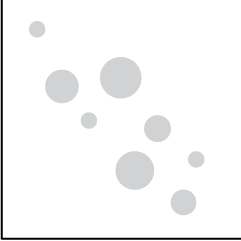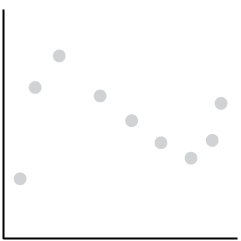GeoCommons, an open repository of data and maps, launched version 2.0 this week, which is more feature-rich and robust than the first. Two of the major updates have to do with the fast-changing data landscape: amount of data and browser technology.
Read More
-
-
My many thanks to the FlowingData sponsors. They help me keep this site up and running, and FlowingData wouldn’t be what it is without them. Check ’em out. They help you make sense of and communicate with data.
Column Five Media — Whether you are a startup that is just beginning to get the word out about your product, or a Fortune 500 company looking to be more social, they can help you create exciting visual content – and then ensure that people actually see it.
InstantAtlas — Enables information analysts and researchers to create highly-interactive online reporting solutions that combine statistics and map data to improve data visualization, enhance communication, and engage people in more informed decision making.
Tableau Software — Combines data exploration and visual analytics in an easy-to-use data analysis tool you can quickly master. It makes data analysis easy and fun. Customers are working 5 to 20 times faster using Tableau.
-
From Aran Kanani on DeviantArt. Try easing up on the tequila and maybe sticking in that middle realm next time, yeah? Have a nice weekend, all.
-
When I first got the opportunity to write a book, I was excited about it, and then I had to figure out what I was going to write about. Data visualization, obviously, but what about it? I was all over the place, and my early ideas are actually nothing like what Visualize This is now.
Read More -
Real estate site Trulia made a great move when they acquired mapping outfit Movity late last year to help users make informed decisions in home buying. A month ago, they launched a price reductions map to let you see how housing prices were changing. Now you can see what crime is like in that area you’re thinking about living in with Crime Map.
Read More -
The traditional way to gauge who we are as a country, state, or city is to turn to Census data for population, salaries, and family size. Many interesting stories can come from this data and it’s indispensable in making country-wide decisions and policies, but it only glosses the surface. Census data doesn’t so much tell us who we are than it tells what we are. Media artist Roger Luke DuBois takes a different type of census — from online dating profiles — called A More Perfect Union.
Read More -
A lot of the time when making plans to meet up with friends or family, you’re not so concerned with how far possible locations are than you are how long it takes to get there. Similarly, when deciding where to live relative to your workplace, you care more about how long it takes to get to work in the morning than you do how many miles away it is. Mapnificent lets you do this. Place the pin on the map, and see where you can get in a specified amount of time via public transportation or bicycle.
Read More -
Love ’em or hate ’em, tag clouds, or the more recent incarnation, Wordles, are everywhere (especially in slide presentations). Well, Wordle wasn’t enough. I mean, you can’t even make shapes with it. Gees. That’s where Tagxedo comes in. It works pretty much just like Wordle, except you have one more option. You can select from a variety of shapes to arrange your words into. Score.
-
Kevin Quealy and Jeremy White report for The New York Times on the rise and fall of housing prices with an interactive time series chart:
The Standard & Poor’s Case-Shiller Home Price Index for 20 major metropolitan areas is one of the most closely watched gauges of the housing market. The figures for March, released May 31, showed prices at their lowest point since the downturn began.
It’s similar to the home run count graphic from last year, although there’s a key difference. It’s not in Flash. It works equally well though.
Either click a city of interest on the left, or interact with the graph directly for more information. Not surprisingly, Detroit have been falling longer than any of the other 19 selected cities, whereas prices in Washington, D.C. have risen the most since February.
-
Sometimes visualizing everything can turn out beautiful results. It seems to work especially well when the data is geographic, as we saw with All Streets, OpenStreetMap edits, and tourist maps. It turns out the everything method works for fictional worlds, too. The above and the video below are nothing but 11.3 million deaths by impact with object or terrain in the game Just Cause 2.
Read More -
The Very Large Telescope (VLT) in an array of four telescopes operated by European Southern Observatory, and together the array “can achieve an angular resolution of around 1 milliarcsecond, meaning it could distinguish the gap between the headlights of a car located on the Moon.” I don’t know much about telescopes or lenses, but I think that’s good. Watch the array at work, exploring galaxies far, far away and boldly going where no man has gone before in this breath-taking time-lapse.
Read More -
Do you know where your fish comes from? Well, yeah, it comes from the water, but there’s a little more to it than that. Nigel Upchurch, who previously explained the benefits of turning off your computer at night, describes in this short one-minute video why eating farmed fish isn’t the best idea. In short, while farming fish seems like a good solution to depleted wild supply, the process actually ends up using even more natural resources.
I like Nigel’s understated approach. Not too flashy that it makes you dizzy, but engaging enough to get you looking. The video is light on data, but that works well for a public service announcement.
Read More -
Aaron Koblin, Creative Director of Google’s Data Arts team, shares some of the many projects that he’s worked on his recent TED talk (video below). Even if you don’t know the name, you’ve undoubtedly come across his work. The takeaway of his talk:
An interface can be a powerful narrative device, and as we collect more personally and socially relevant data, we have an opportunity and maybe even an obligation to maintain a humanity and tell some amazing stories as we explore and collaborate together.
It’s not all facts and figures, dontcha know.
-
Formatting data is a necessary pain, so anything that makes formatting easier is always welcome. Data Wrangler, from the Stanford Visualization Group, is the latest in the growing set of tools to get your data the way you need it (so that you can get to the fun part already). It’s similar to Google Refine in that they’re both browser-based, but my first impression is that Data Wrangler is more lightweight and it feels more responsive.
Read More -
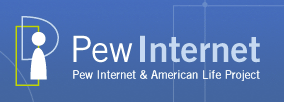 The Pew Research churns out a lot of interesting results from a number of surveys about online and American culture, but they usually only shared aggregated results, pre-made charts and graphs. This is well and good for the information-consuming public; however, these results can spawn curiosities that are fun to dig into. Luckily, the Pew Research Center launched a Data Sets section that provides raw survey responses and the questions in a variety of easy-to-use data formats.
The Pew Research churns out a lot of interesting results from a number of surveys about online and American culture, but they usually only shared aggregated results, pre-made charts and graphs. This is well and good for the information-consuming public; however, these results can spawn curiosities that are fun to dig into. Luckily, the Pew Research Center launched a Data Sets section that provides raw survey responses and the questions in a variety of easy-to-use data formats. Our raw data, previously posted only as SPSS files, is now available in comma-delimited (.csv) format for all reports going back to 2003. We hope that making our data available in this open-source format will make analysis easier for researchers who don’t own a copy of SPSS to analyze our data.
This should be fun. Recent datasets include the social side of the Internet, health tracking habits, and reputation management.
[Pew Research via @kzickhur]
-
A while back, Google showed how Influenza outbreaks correlated to searches for flu-related terms with Google Flu Trends. It helped researchers and policy-makers estimate flu activity much sooner than with previous methods. Google Correlate is the evolution of Flu Trends in that now you can correlate search trends with not just flu cases, but with your own data or other search queries.
Read More -
 The best way to learn how to visualize data is to grab a dataset and see what you can do with it. You can read as many tips and tricks as you want, but you’re not going to get any better until you actually try. Contests are a fun way to do this.
The best way to learn how to visualize data is to grab a dataset and see what you can do with it. You can read as many tips and tricks as you want, but you’re not going to get any better until you actually try. Contests are a fun way to do this. Participate
So here are a handful of visualization contests to get your hands dirty. Hey you might even win a couple of thousand dollars. Not that money matters to you, because as well all know, learning is your reward.
Hacking Education — A contest for developers and data crunchers. DonorsChoose.org has inspired $80 million in giving from 400,000 donors, helping 165,000 teachers at 43,000 schools, and the donation site has opened up this data. Can do you do something with it? Deadline: June 30, 2011.
Data In Sight — A hands-on competition in San Francisco’s SoMa district with surprise data sources. Some talks, lunch, dinner, and a 24-hour hackathon. Event date: June 24, 2011 (better to register your team early).
Tableau Interactive Viz Contest — This one is coming up the quickest, but is the most straightforward. Plus, you get a t-shirt just for entering. Grab some business, finance, or real estate data and go to town with Tableau Public. Deadline: June 3, 2011.
Know of any other data/visualization contests coming up? Let us know in the comments.
-
The IBM Visual Communication Lab published their first of what I hope many sketches exploring topics covered by The New York Times and its authors called NYTimes Writes, by Irene Ros. Start with a search term, and the tool will fetch related articles from the past 30 days. You’ll get something that looks like the above, which is what I got when i searched for “data.”
Read More -
OECD, with the help of Moritz Stefaner and Raureif, promote a well-being index beyond GDP in the Better Life Initiative:
There is more to life than the cold numbers of GDP and economic statistics — This index allows you to compare well-being across countries, based on 11 tpoics the OECD has identified as essential, in the areas of material living conditions and quality of life.
Based on topics such as health, housing, and education, each country is represented with a flower, and each petal on a flower represents a metric. The higher the index, the higher the flower appears on the vertical axis, and if the flower metaphor is too abstract for you, roll over each flower to see the breakdown by bar graph.
Read More -
As reported by The New York Times, the tornado in Joplin, Missouri, known to have killed at least 100 people, makes 2011 the deadliest year of tornadoes since 1953 (519 deaths). There have been over 450 tornado-related deaths this year. This NYT interactive shows number of deaths per year with yellow circles and tornado touchdowns and paths with blue lines and dots.
Read More


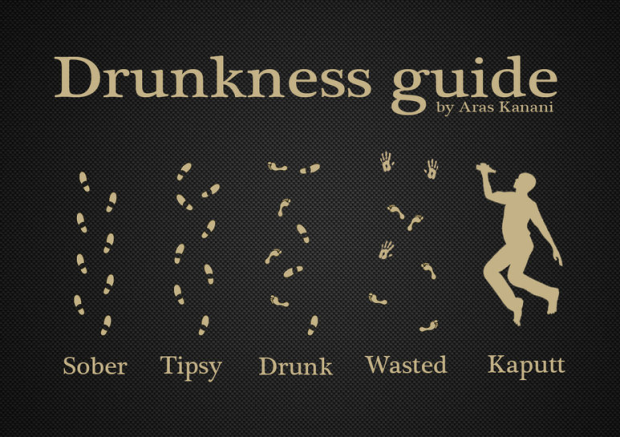
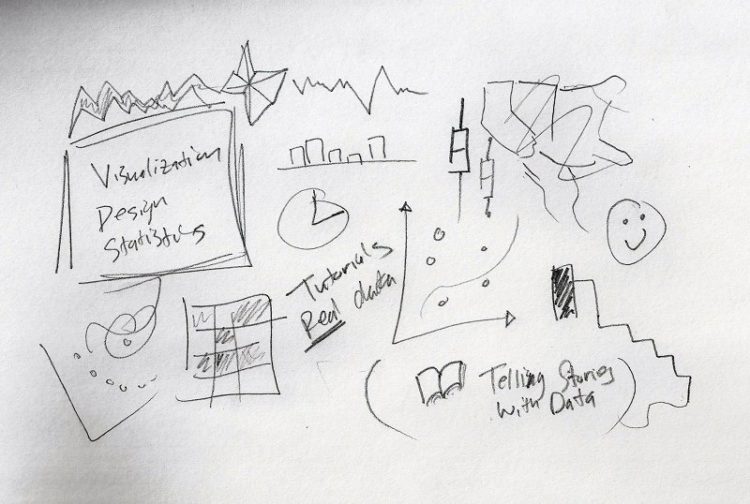


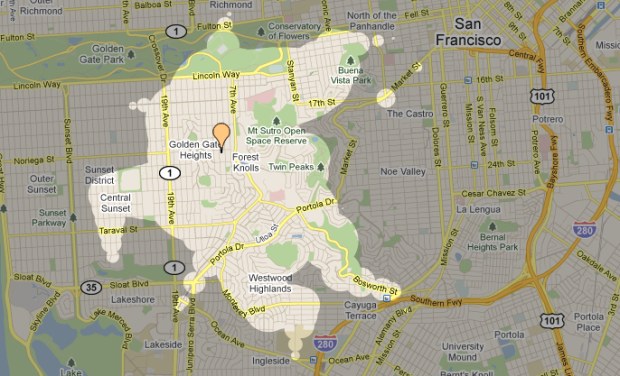
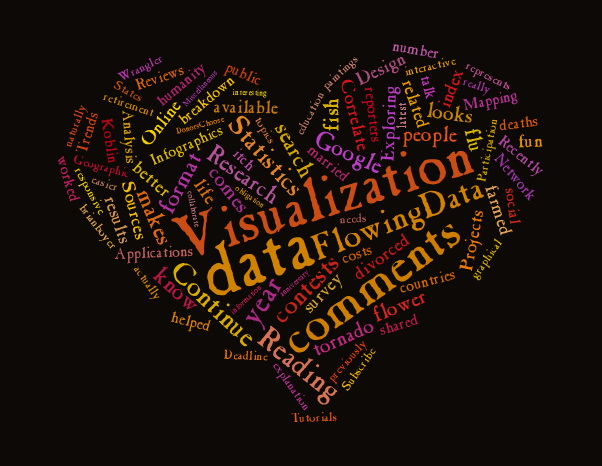
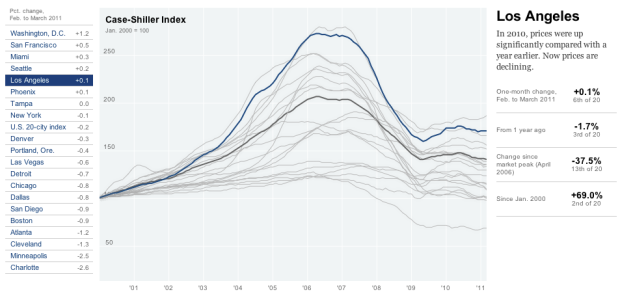



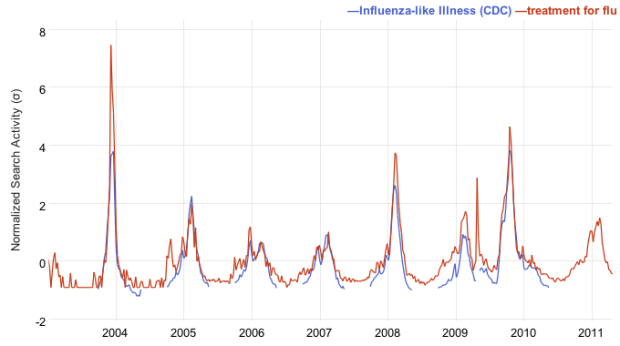
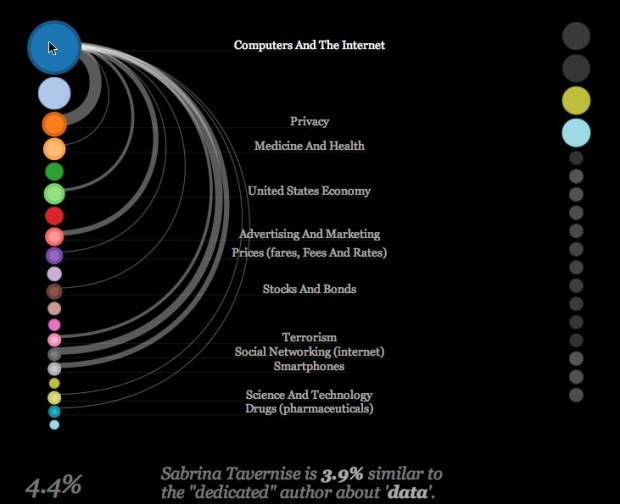
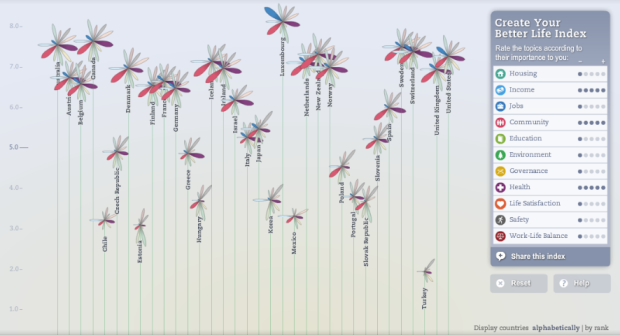

 Visualize This: The FlowingData Guide to Design, Visualization, and Statistics (2nd Edition)
Visualize This: The FlowingData Guide to Design, Visualization, and Statistics (2nd Edition)

